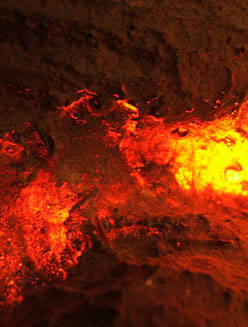Electricity and the Environment
Electricity can be generated from renewable and non-renewable energy sources.
Renewable sources
In the future, more of our electricity will be produced from renewable energy sources like the sun, wind, waves, nuclear fission and the heat of the Earth. Renewable sources can be used again and again and are unlikely to run out. Renewable sources produce few or no greenhouse gas emissions, which makes them much less harmful to the environment.
Non-renewable sources
Currently, most of our electricity comes from power stations which burn fossil fuels such as coal, oil and gas.These sources are called non-renewable because we can’t replace them and they are beginning to run out. Burning fossil fuels produces the greenhouse gas carbon dioxide, which adds to global warming.
Can you tell which energy sources are renewable or non-renewable?
-
Hydroelectricity
Hydroelectric power stations use the energy produced by the release of water stored behind dams. Hydropower dam sites are usually found in mountainous regions, where the water from lakes, reservoirs or rivers can be used to turn large turbines.
As water is piped at high pressure from a hydropower dam, it picks up speed. The energy produced by this process is called kinetic energy. The energy in the water is used to turn turbines which drive the generators of the power station. This produces electricity.
Interesting facts about Hydroelectricity
- The Greeks used a process like this to make flour. They used water wheels to grind wheat with large stones.
- The largest hydroelectric power station in the world is at China’s Three Gorges dam on the Yangtze River
What kind of resource is Hydroelectricity?
Spot on! Hydroelectricity is a renewable resource.
Whoops! Hydroelectricity is actually a renewable resource.
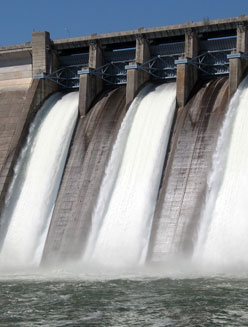
-
Biomass
Biomass uses the energy in plants and waste organic materials to make electricity. For example, wood can be burnt to make steam that drives steam turbines, and methane gas can be produced from animal droppings to drive gas turbines.
What kind of resource is Biomass?
Spot on! Biomass is a renewable resource.
Whoops! Biomass is actually a renewable resource.
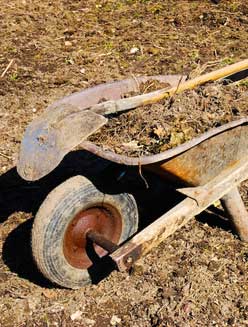
-
Wind
Wind is air on the move. Each molecule of air has kinetic energy because it is moving. Electricity companies collect this energy using wind turbines. When the wind blows on the blades of a wind turbine, the blades rotate, driving a generator to produce electricity.
In a large ‘wind farm’, the electricity generated by each wind turbine is collected together and then flows into the national electricity distribution system.
What’s inside a wind turbine?
A wind turbine has four main parts:
- Foundation
- This holds the turbine in place on the ground or sea bed. A wind turbine has to be securely attached to the ground or sea bed to support the whole structure and resist strong winds and, if offshore, waves.
- Tower
- The tower supports the generation equipment and raises the blades high above the ground or sea, where the wind currents are smoother and stronger.
- Rotor, gearbox and generator
- These are used to convert the wind energy into electrical energy
- Blades
- A wind turbine usually has three blades that are driven by the wind to turn the rotor. The longer the blades and the faster the wind speed, the higher the potential output power. (However, wind turbines have to automatically shut down if the wind is too strong, in order to prevent damage to the equipment).
What kind of resource is Wind?
Spot on! Wind is a renewable resource.
Whoops! Wind is actually a renewable resource.
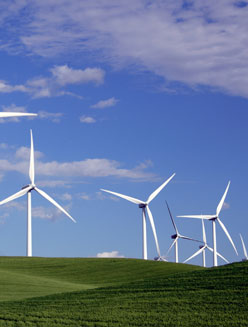
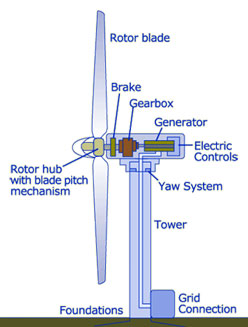
-
Nuclear
Many nuclear power stations use uranium because its atoms can be split apart easily to release nuclear energy in the form of heat. Uranium is the heaviest of all naturally-occurring elements and can be found in rocks all over the world.
Uranium powder is compacted into cylindrical pellets which are then sealed in metallic tubes to make fuel rods that form the core of the nuclear reactor. The fuel rods are bombarded with neutrons (sub-atomic particles contained in the atomic nucleus), which cause the uranium atoms to split – a process called nuclear fission.
Nuclear fission generates a large amount of heat. This can be used to boil water to create steam, which drives a turbine to generate electricity.
Nuclear power stations do not release carbon dioxide, so they do not contribute to global warming, but the waste products are hazardous to the environment unless strictly controlled.
Interesting facts about Nuclear
- Some military ships and submarines have nuclear reactors to power their engines.
- Nuclear fusion is one of the most promising options for generating large amounts of carbon-free energy in the future. Fusion is the process that heats the Sun and all other stars, where atomic nuclei collide together and release energy. Fusion scientists and engineers are developing the technology to use this process in tomorrow's power stations.
What kind of resource is Nuclear?
Spot on! Nuclear is a non-renewable resource.
Whoops! Nuclear is actually a non-renewable resource.
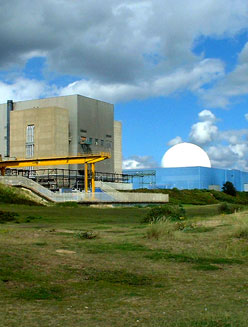
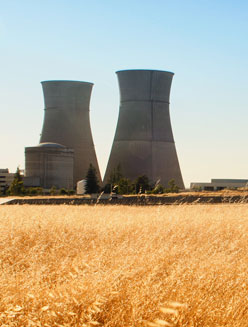
-
Solar energy
There are two ways you can generate electricity from the Sun: solar photovoltaic (PV) and solar-thermal technologies.
- Photovoltaic (PV): The photovoltaic effect is the direct conversion of light into electricity at the atomic level. Solar panels consist of PV cells, which are usually made from silicon or other semiconductive materials. These cells absorb photons of sunlight and release electrons. When these free electrons are captured, an electric current results that can be used as electricity. The stronger the sunlight, the more electricity the cells produce. Groups of solar panels are usually mounted together on roofs to provide electricity to help power homes or businesses
- Solar-thermal technologies, on the other hand, use the sun’s energy to create steam to drive a generator to make electricity. For example, mirrors can be used to reflect and focus sunlight onto metal tubes containing water to produce steam.
What kind of resource is Solar energy?
Spot on! Solar energy is a renewable resource.
Whoops! Solar energy is actually a renewable resource.
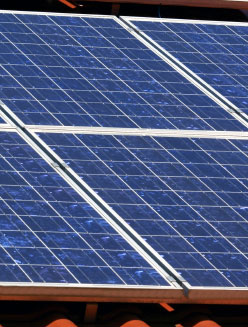
-
Oil
Oil, a fossil fuel, is a finite natural resource. It was formed millions of years ago from plant matter, and can be found in deep underground reservoirs. Once extracted, there are three ways to convert oil into electricity:
- Conventional steam, where oil is burned in boilers to heat water. This creates steam which is used to drive generators.
- Gas (combustion) turbine, where oil is burned at high pressure in a confined space. This produces hot exhaust gases which power the turbine to generate electricity.
- Combined-cycle technology, where a gas turbine generator generates electricity; and heat in the exhaust is used to make steam, which in turn drives a steam turbine to generate additional electricity. This second step enhances the efficiency of electricity generation
Burning oil, like other fossil fuels, produces large quantities of carbon dioxide, which contributes to global warming.
What kind of resource is Oil?
Spot on! Oil is a non-renewable resource.
Whoops! Oil is actually a non-renewable resource.
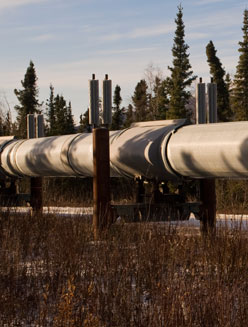
-
Coal
Coal is another fossil fuel which was formed millions of years ago from compressed plant matter. And, like the other fossil fuels, is a finite resource.
Coal can be burnt to produce steam, which can be used to drive large electrical generators and turbines to produce electricity.
Coal-fired power stations produce large quantities of carbon dioxide, increasing the threat of global warming.
What kind of resource is Coal?
Spot on! Coal is a non-renewable resource.
Whoops! Coal is actually a non-renewable resource.
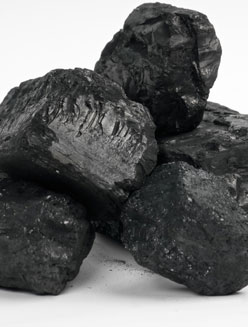
-
Natural Gas
As with other fossil fuels, natural gas is found in underground reservoirs. Produced by the decomposition of organic materials, it is also the cleanest of all fossil fuels.
Natural gas can be burnt to generate electricity in much the same way as the other fossil fuels.
What kind of resource is Natural Gas?
Spot on! Natural Gas is a non-renewable resource.
Whoops! Natural Gas is actually a non-renewable resource.
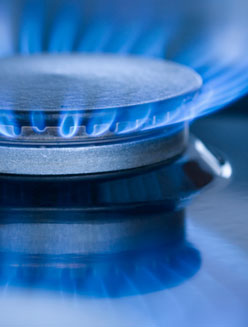
-
Tidal energy
Tidal energy devices use the natural rise and fall of coastal tidal waters caused principally by the interaction of the gravitational fields of the Sun and Moon. The tide moves a huge amount of water twice each day which can be harnessed to drive turbines which power generators to produce electricity.
Although tidal energy is plentiful, a major drawback is that it can only be generated when the tide is flowing in or out, which only happens for approximately ten hours each day.
FACT: The largest tidal power station in the world was built in 1966 and is located in the Rance estuary in northern France.
What kind of resource is Tidal energy?
Spot on! Tidal energy is a renewable resource.
Whoops! Tidal energy is actually a renewable resource.
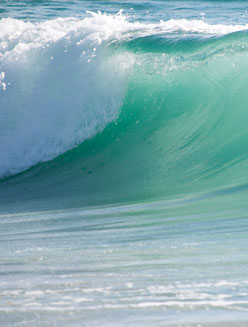
-
Geothermal energy
Geothermal energy is the heat from the core of the Earth.
Hot rocks underground heat water to produce steam, which can be extracted through deep boreholes. This steam is then purified and used to drive turbines which generate electricity.
Geothermal energy does not produce any pollution and is sustainable.
What kind of resource is Geothermal energy?
Spot on! Geothermal energy is a renewable resource.
Whoops! Geothermal energy is actually a renewable resource.
